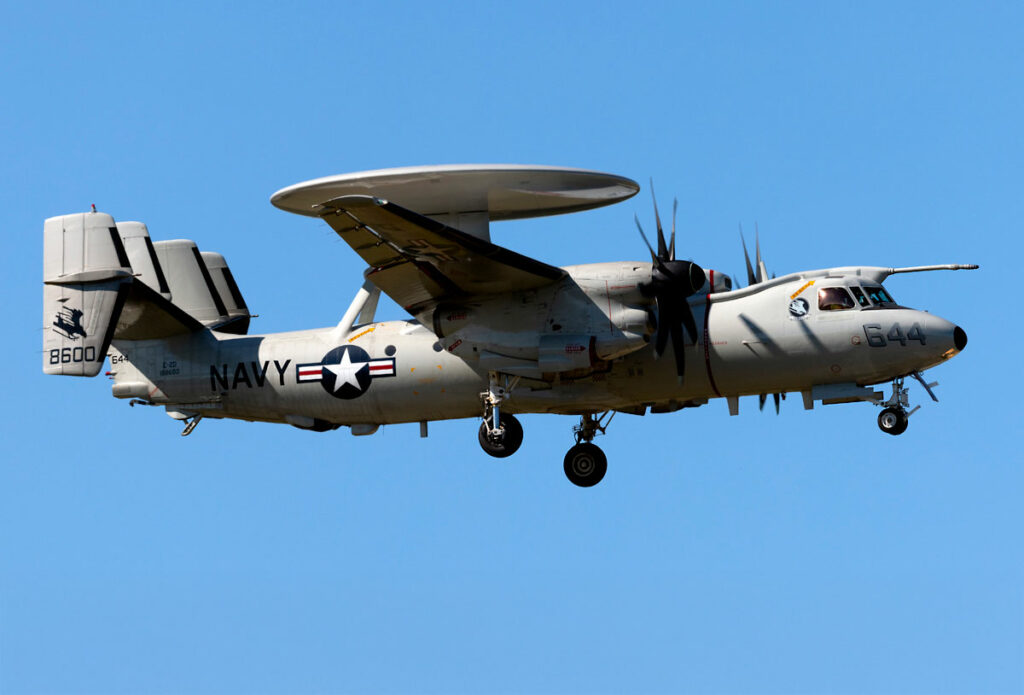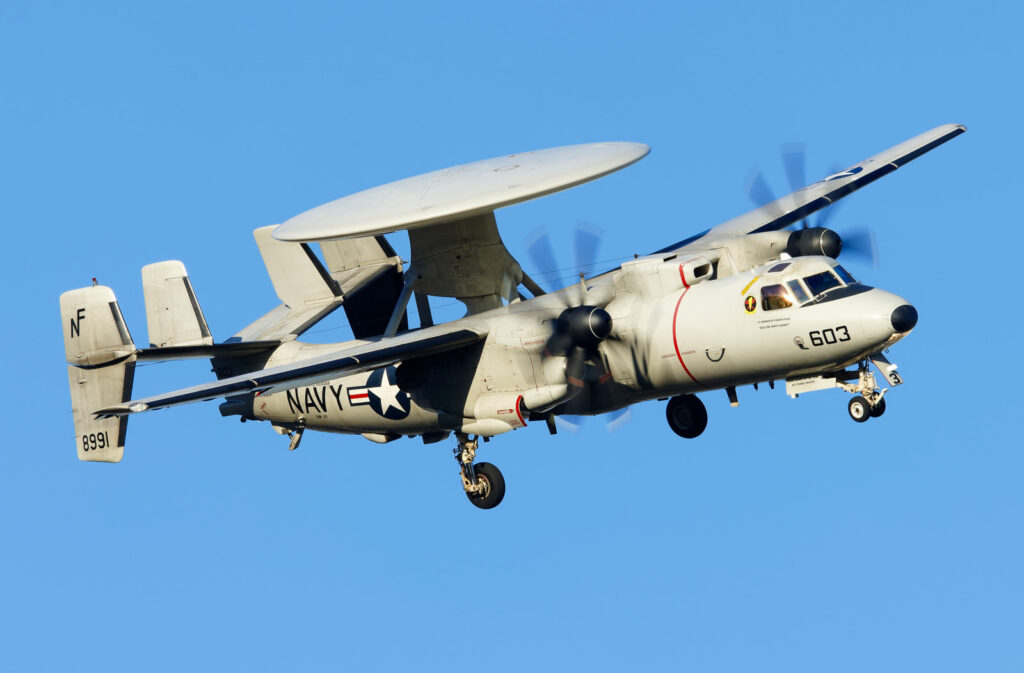The Northrop Grumman E-2D Hawkeye is an advanced carrier-based airborne early warning and control aircraft, featuring state-of-the-art radar and enhanced avionics for superior surveillance and battle management.
The Northrop Grumman E-2D Hawkeye is a carrier-based airborne early warning and control (AEW&C) aircraft developed for the U.S. Navy. Equipped with the AN/APY-9 radar, it provides comprehensive surveillance, tracking, and communication capabilities. The E-2D features a glass cockpit, advanced avionics, and improved engines, enhancing its operational performance. With a five-person crew, it serves as a command and control hub, coordinating air and surface assets. The aircraft’s design includes a distinctive rotating radar dome mounted above the fuselage, facilitating 360-degree radar coverage. Its capabilities are integral to modern naval operations, offering real-time situational awareness and battle management.

History of Development
In the mid-20th century, the U.S. Navy recognized the necessity for an airborne platform capable of providing early warning and command and control functions to protect carrier strike groups from emerging aerial threats. This led to the development of the E-2 Hawkeye series, with the initial E-2A variant entering service in 1964. Over the decades, advancements in technology and evolving threat landscapes necessitated continuous upgrades to the platform.
By the early 2000s, the Navy identified the need for a more advanced system to address modern challenges, including stealth aircraft and cruise missiles. In response, Northrop Grumman initiated the development of the E-2D Advanced Hawkeye. The program aimed to enhance radar capabilities, improve avionics, and integrate advanced communication systems. The E-2D’s first flight occurred on August 3, 2007, marking a milestone in its development. Subsequent testing and evaluation led to its initial operational capability being declared in 2014. The E-2D has since become a cornerstone of the Navy’s integrated air and missile defense architecture, providing critical surveillance and battle management functions.
Design
The E-2D Hawkeye features a high-wing monoplane design with a distinctive 24-foot (7.3-meter) diameter rotating radar dome mounted above the fuselage. This configuration allows for 360-degree radar coverage. The aircraft is powered by two T56-A-427A turboprop engines, each producing 5,100 shaft horsepower, enabling a maximum speed of approximately 350 knots (648 km/h) and a service ceiling of 34,700 feet (10,576 meters). The E-2D’s airframe incorporates corrosion-resistant materials to withstand the maritime environment. The glass cockpit features advanced avionics, including digital displays and an integrated flight management system, enhancing situational awareness and reducing pilot workload. The aircraft’s design facilitates carrier operations, with folding wings for storage and a robust landing gear system to handle catapult launches and arrested landings.
Performance
The E-2D’s AN/APY-9 radar system provides a two-generation leap in detection capabilities, enabling the tracking of smaller and stealthier targets at greater ranges. The aircraft’s communication suite includes Cooperative Engagement Capability (CEC), allowing it to share sensor data with other platforms, enhancing integrated fire control. The E-2D’s endurance is approximately six hours on station, extendable with aerial refueling capabilities. Its operational range exceeds 1,500 nautical miles (2,778 kilometers), supporting extended missions. Compared to competitors like the Russian A-50 or the Chinese KJ-2000, the E-2D offers superior integration with naval operations and advanced network-centric warfare capabilities.

Variants
The E-2D is the latest in the Hawkeye series, following earlier variants such as the E-2A, E-2B, and E-2C. Each iteration introduced incremental improvements in radar technology, avionics, and propulsion systems. The E-2D represents a significant upgrade, featuring the AN/APY-9 radar, advanced avionics, and aerial refueling capability. There are no major sub-variants of the E-2D; however, ongoing upgrades continue to enhance its capabilities.
Military Use and Combat
The E-2D Hawkeye serves as the “digital quarterback” for carrier strike groups, providing real-time surveillance, threat detection, and battle management. Its primary role is to detect and track airborne and surface threats, coordinating defensive and offensive operations. The E-2D has been deployed in various operations, including humanitarian assistance and disaster relief missions, where its surveillance capabilities support coordination efforts. While primarily operated by the U.S. Navy, the E-2D has been approved for export to allies, including France and Japan, enhancing their naval capabilities. The aircraft remains in active service, with ongoing production and upgrades ensuring its relevance in future operations.
Back to the Special Aircraft section